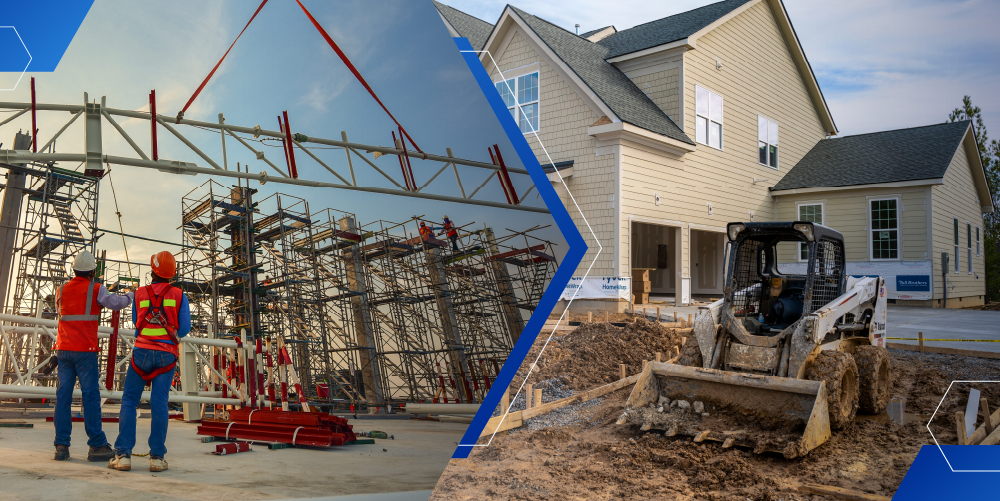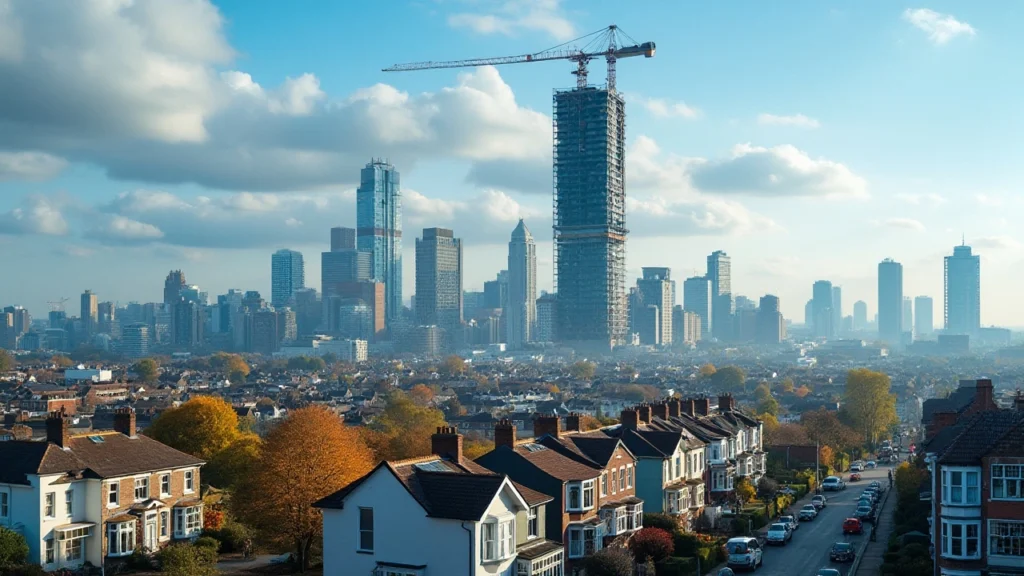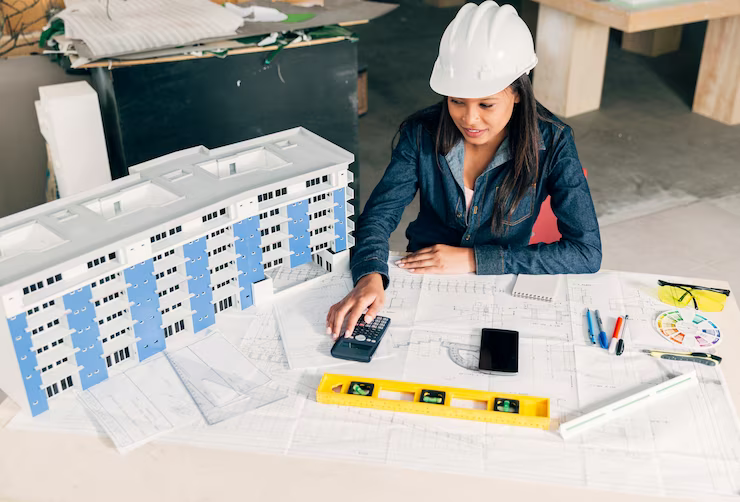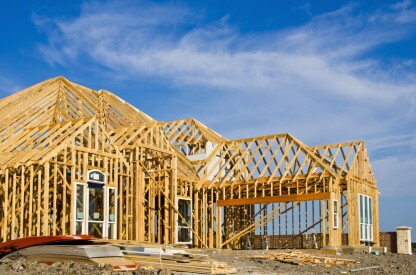
When planning a construction project, understanding the costs associated with residential and commercial buildings is crucial for effective budgeting. Construction expenses can vary greatly depending on factors such as materials, labor, and the inclusion of energy efficient systems or more elaborate security systems. Residential properties often focus on comfort and functionality, while commercial contractors prioritize scalability and compliance with high-rise office building standards.
Additionally, the choice of construction equipment, general contractors, and energy efficient materials plays a significant role in the overall cost. This guide will explore the key distinctions between residential and commercial construction projects and shed light on the factors that influence pricing.
Key Differences Between Residential and Commercial Construction
Residential construction primarily focuses on building structures intended for people to live in. These include single-family homes, residential buildings such as multi-family apartments, townhouses, and condominiums. These projects prioritize comfort, design aesthetics, and functional living spaces suited to the needs of individuals and families. Residential contractors typically manage these smaller-scale projects with attention to detail and homeowner preferences.
On the other hand, commercial construction involves creating buildings meant for business or industrial use. Examples include commercial office buildings, retail spaces, industrial buildings, hotels, and educational facilities. These structures are typically designed to accommodate business operations, facilitate customer interaction, or serve as public venues. Understanding the distinctions between residential vs commercial construction is essential for stakeholders.

Purpose and Scale
The purpose and scale of residential and commercial construction distinguish them significantly. Residential projects usually emphasize smaller-scale construction tailored to family-sized living areas, where the goal is to provide warmth, comfort, and security. These projects are less complex and are often completed in shorter timeframes compared to commercial ventures.
Commercial construction operates on a much larger scale and involves higher levels of complexity. These projects must address a wide range of functional needs, such as accommodating large crowds, providing ample parking, integrating advanced mechanical systems, and ensuring operational efficiency. Consequently, the scale of commercial construction demands extensive collaboration and management for a successful construction project.
Building Codes and Regulations
Building codes and regulations present another key distinction between the two types of construction projects. Commercial buildings are required to adhere to stricter codes and standards due to their scale and public usage. These regulations encompass fire safety, accessibility for individuals with disabilities, environmental compliance, and structural integrity to support heavy loads and high traffic.
Residential construction, while still subject to building codes, tends to have more lenient requirements. The focus is typically on ensuring safety and habitability for smaller numbers of occupants. Adhering to these guidelines ensures that residential vs commercial construction projects meet their respective safety and functional standards.

Primary Factors That Impact Construction Costs
When it comes to construction costs, there are several key factors that play a significant role in determining the total cost of a project. These primary factors include materials, labor, and overhead expenses. Let’s take a closer look at each one in the estimating process.
Material Costs
The price of building materials is one of the most significant factors influencing total construction cost. Fluctuations in the cost of resources such as lumber, steel, concrete, and glass can greatly impact the overall building costs. Market demand, availability, and transportation expenses further affect cost estimation.
Labor Expenses
Labor costs are another crucial consideration in new construction projects. These costs depend on the number of workers required, their skill level, and regional wage standards. Specialized labor, such as electricians or plumbers, can notably increase expenses compared to general construction labor.
Project Size and Complexity
The scale and intricacy of a construction project play a direct role in determining costs. Larger projects or those with unique design elements often require more time, materials, and labor, driving up the total construction cost. Complex construction methods or systems add further expenses.
Location and Site Conditions
The location of the construction site impacts costs due to factors such as land prices, building permits, local building codes, and regulations. Additionally, site conditions—such as uneven terrain, soil quality, or the need for demolition of an existing structure—can create additional challenges and expenses.
Permits and Regulatory Compliance
Acquiring necessary building permits and adhering to local, state, and federal regulations contributes to overall construction costs. Requirements such as environmental assessments, safety inspections, and zoning compliance must be met, often involving fees and procedural delays that affect the entire project.
Equipment and Technology
Construction projects rely on various equipment and technological tools, which can significantly affect costs. Renting or purchasing heavy machinery, along with incorporating advanced construction technologies like Building Information Modeling (BIM), adds to the total cost of the project.
Project Timeline
The duration of a construction project also impacts costs. Delays due to weather, supply chain disruptions, or design changes can increase labor and equipment rental expenses. Efficient project management helps mitigate these risks and control construction costs.
Understanding these factors allows property owners and contractors to better plan and allocate resources, ensuring a successful construction project.
Cost Breakdown for Residential Construction
The size of a home plays a crucial role in determining building costs. For small homes, typically under 1,500 square feet, the average cost often ranges between $100,000 and $200,000 depending on materials and design. Medium houses, spanning between 1,500 and 3,000 square feet, generally cost between $200,000 and $400,000.
On the higher end of the spectrum, luxury residential buildings exceeding 3,000 square feet can easily surpass $1 million, incorporating premium materials, state-of-the-art technologies, and intricate architectural details.
Factors That Influence Pricing
Several factors affect the cost of building a home. The choice of finishes, such as flooring, cabinetry, and fixtures, can significantly shift the budget. High-end finishes often contribute to a marked increase in expenses.
Location also plays a pivotal role, as construction costs vary by region due to differing labor rates, building permits fees, and accessibility to materials. Additionally, contractor fees, which include labor, management, and markup, contribute to the total cost and can fluctuate based on the builder’s experience and reputation.
Common Challenges and Cost Overruns
Unexpected costs are a common challenge during residential construction. Land preparation, such as clearing the plot, grading, or addressing poor soil conditions, can add unforeseen expenses. Customizations, including structural changes or specialized features requested mid-construction, often lead to additional costs and potential delays.
Furthermore, supply chain disruptions or errors in project planning may cause budget overruns, emphasizing the importance of thorough preparation and clear communication among property owners and stakeholders. This is especially important in both new construction and renovation projects, where delays can affect maintenance costs and overall profitability.

External Factors That Affect Overall Construction Costs
There are various external factors that can significantly impact the overall cost of a building project. These factors may be beyond the control of the builder or developer, but they must still be taken into consideration during construction cost estimation, planning, and budgeting.
Economic Conditions
Fluctuations in the economy can significantly impact construction costs. Inflation, changes in interest rates, and economic recessions often lead to higher prices for materials, labor, and equipment. Additionally, periods of economic growth can create increased demand for construction industry resources, driving up costs further.
Material Costs and Availability
The cost and availability of building materials are subject to global supply and demand trends. For instance, shortages in timber, steel, or concrete due to production issues, natural disasters, or trade restrictions can lead to sudden price spikes. It is crucial to monitor these trends and plan accordingly in any residential or commercial building project.
Regulatory and Permitting Requirements
Local building codes, zoning laws, and environmental regulations can also influence commercial construction cost and timelines. Permitting fees, compliance measures, and inspections may incur extra expenses, particularly if project requirements vary by region or change over time.
Weather Conditions
Unpredictable weather patterns can disrupt construction schedules, causing delays and escalating labor and equipment costs. Extreme conditions, such as heavy rain, snow, or high winds, may even require adjustments to project scope or structural designs, further increasing expenses.
By understanding and preparing for these external factors, construction companies and stakeholders can mitigate risks and make informed decisions to manage total construction cost effectively.
Cost-Saving Tips for Both Residential and Commercial Projects
While external factors may be beyond control, there are still ways to reduce and manage costs for residential construction projects and commercial structures. Here are some tips that can help stakeholders save money and increase efficiency during the construction process:
Plan Thoroughly
Developing a comprehensive plan before starting any project is crucial. This includes detailed designs, accurate construction cost estimation, and a clear timeline. A well-thought-out plan reduces the chances of unexpected expenses and delays in both residential and commercial construction.
Invest in Energy-Efficient Solutions
Opt for energy-efficient materials, appliances, and systems. While they may involve higher upfront costs, they often result in significant savings in the long run through reduced utility bills and potential tax incentives. These strategies also improve ROI, especially in commercial building projects.
Source Materials Locally
Using locally sourced materials minimizes transportation costs and supports the local economy. Additionally, local materials are often well-suited to the climate and conditions of the construction site.
Choose Durable and Low-Maintenance Materials
Selecting high-quality, durable materials that require minimal maintenance costs over time can help save money on repairs and replacements in the future. Consider options such as metal roofing or composite decking for long-term cost efficiency—essential in both residential and commercial structures.
Optimize Labor Efficiency
Streamlining construction processes and prioritizing skilled labor can boost efficiency and reduce labor costs. Clear communication among team members also helps avoid misunderstandings and costly mistakes, especially in larger construction business operations.
Implement Sustainable Practices
Incorporating sustainable practices, such as recycling construction waste and repurposing materials, can decrease costs while benefiting the environment. Green building also helps earn certifications that add value to the entire project and attract eco-conscious clients.
By employing these strategies, both residential contractors and commercial construction companies can achieve cost-effective results without compromising on quality or functionality.
Comparing Return on Investment (ROI) for Green Building
Green building initiatives are gaining traction as more developers and investors recognize their long-term benefits. Before diving into ROI comparisons, it’s important to understand how these practices impact financial and environmental outcomes.
Residential Projects Considerations
When evaluating ROI in residential construction projects, it is essential to consider current real estate market trends. Factors such as location, neighborhood development, and demand for housing play a significant role in determining profitability per square foot.
Additionally, renovations or modern upgrades tailored to buyer preferences can significantly enhance property value. Understanding market cycles and forecasting shifts in housing demand can help investors make informed decisions and maximize their returns.
Commercial Projects
Commercial construction companies tend to focus on long-term value and rental income potential. Unlike residential properties, which often rely on market trends, commercial projects thrive on stable lease agreements and occupancy rates. Investments in high-traffic locations or properties catering to specific industries, such as retail or logistics, can yield consistent returns over time.
Furthermore, the ability to adjust rents with market growth or inflation ensures sustained profitability, making commercial structures an attractive option for investors seeking steady income and appreciation. Accurate average commercial construction costs assessments play a key role in budgeting and ROI analysis.
Conclusion
In conclusion, commercial real estate offers a compelling investment opportunity due to its potential for steady income, long-term appreciation, and adaptability to market dynamics. By carefully assessing location, industry demands, cost estimates, and economic trends, investors can maximize returns while mitigating risks. With proper planning and strategic decision-making, commercial properties can serve as a reliable foundation for financial growth and stability in the construction business.
